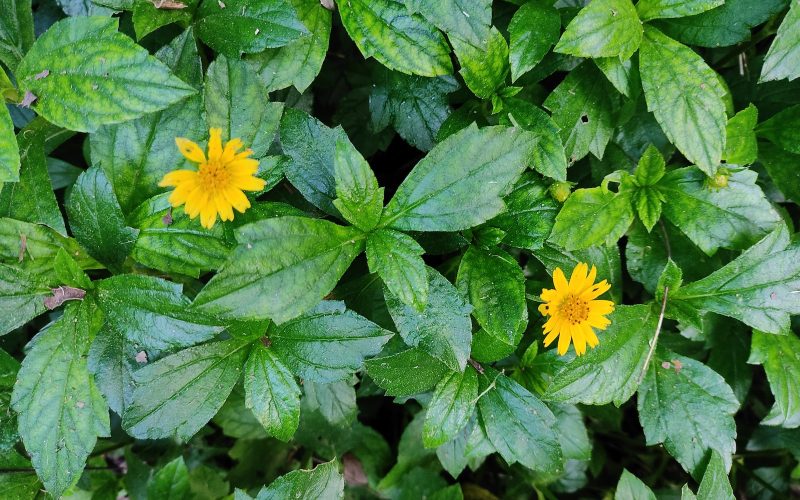With its diverse terrain and climate, India has been a hub of unique and diverse flora and fauna.
Unfortunately, several plant species have become extinct due to various human activities and natural disasters.
The loss of these plants affects the region’s biodiversity and significantly impacts human health and well-being.
This article will delve into extinct plants in India, highlighting some of the most notable plant species that have vanished from the country’s landscapes.
1. Calamites
Calamites were large, pre-historic plants that existed during the Carboniferous Period.
They were relatives of modern horsetails and typically grew in thickets fed by underground rhizomes reaching as high as 160 feet (50m).
These tall, bamboo-like plants showed distinctive ribbing and hollow structures that could be easily fossilized over time.
Nowadays, Calamites have completely disappeared from the earth’s surface since their extinction in the Permian Era.
However, they exist today in various forms scattered throughout different continents.
Despite their long disappearance, you can still see the remnants of this ancient group from the fossils they left behind to this day.
Structures like rhizome networks and long stalks with ribbed patterns helped scientists better understand the dynamics of life on earth when these species still roamed freely.
2. Cooksonia
Cooksonia is among the extinct plants in India and lived about 433 million years ago.
However, researchers have found a few fossil occurrences of this plant, but not many as it’s quite difficult to locate due to their small size.
Therefore, its exact physical structure and functioning remain unknown.
The most accepted theory is that the Cooksonia plant had no leaves, flowers, or roots and comprised slender stalks.
Such a primitive organism suggests that earth’s atmosphere at the time was already oxygen-storing and nutrient-rich enough for complex land-dwelling life forms to be created.
It serves as a reminder of how senior lifeforms led the evolution path resulting in the current flourishing array of terrestrial species.
3. Sigillaria
Sigillaria is also one of the extinct plants in India. It was famous for its tall stature, growing up to 100 feet.
Unlike other trees in its era, Sigillaria had scales rather than bark, and its leaves were similar to grass in their appearance, growing from a forked top end of the tree.
The distinct feature of this plant was how fast it grew due to the uneven distribution of the spores among the population.
Unlike standard flowering plants, Sigillaria reproduced through spores. This allowed them to rapidly spread throughout their environment faster and more efficiently than other plant species at the time.
Also, it gave them an edge when it came to surviving natural selection since they could reproduce quicker than other species.
Therefore, they gained access to more resources easier than those who didn’t have such reproductive advantages.
4. Rhynia
The Rhynia was an amazing evolutionary discovery that shed light on the development of vascular plants approximately 400 million years ago.
This tiny bisexual sporophyte generation was a rarity among its peers. This is because of its more advanced distinctive anatomical features during their time.
In other words, it provided clues to what could have been among Earth’s first true species of vascular plants.
These creatures were located in the vicinity of a silica-rich hot spring, and they grew close to other vegetation.
A notable feature was the presence of deep axial conducting tissue, which allowed nutrients and water transport within the plant body.
As one might imagine, these structures gave rise to larger terrestrial plants later.
By studying this fascinating organism, scientists have better understood how primitive land plants evolved into their modern-day relatives.
They also understood how living tissues interact for efficient nutrient uptake and resource exchanges.
5. Franklinia
Among the extinct plants in India is the Franklinia plant. It was famous for its fragrant white flowers, yellow pollination buds in between, and glorious leaves that would turn red in autumn.
Unfortunately, this plant has gone extinct with zero traces. The cause for such extinction is unknown precisely.
However, it links to many factors like degradation, deforestation, pest increase, and climate.
This destruction of the environment has also put pressure on so many other species.
Also, it’s saddening to note that such fantastic natural creations may no longer exist within a few years owing to human negligence.
6. Silphium
Silphium was a plant that had an especially critical role in the Greek and Egyptian dynasties due to its medicinal and contraceptive qualities.
The mysterious plant, native to North Africa, thrived during antiquity. But unfortunately, it is now extinct due to over-harvesting.
People used the famed Silphium as a medicinal cure-all for treating everything from impotence and ulcers to menstrual difficulties and contraception.
This plant became such an important remedy that it was featured in ancient medical manuscripts like Pliny’s Natural History.
Also, small towns could keep births within economic limits using Silphium as birth control.
Another application of Silphium was fragrances and cosmetics, which began in Egypt and quickly gained popularity throughout Ancient Greece.
Despite the rising demand for this precious herb, records show that by 75 CE, production ceased completely; its extinction was believed to be caused by the over-exploitation of this same precious herb.
7. Glossopteris
Glossopteris is among the extinct plants in India that lived during the Permian period.
It is famous for its distinctive tongue-shaped leaves, which are the reason for its name “Glossopteris,” which means “tongue fern.”
Also, Glossopteris plants were large, tree-like plants that grew in the supercontinent of Gondwana.
This type of organism not only produces seeds but can produce fruit, too, giving us insight into how far flowering plants have come since then.
Despite Glossopteris becoming extinct over 250 million years ago, its scientific contributions remain invaluable.
Classes worldwide are even integrating knowledge about these ancient fossils into their curriculum to raise awareness about the importance of plant life on earth both now and then.
8. Toromiro
The Toromiro tree was once a key part of the unique flora found on Easter Island.
Endemic to this isolated region and often used for construction, this species had long been the backbone of island life.
However, its extinction in the wild has marked an irreversible change, and these changes would have affected the lives of people living here.
Unfortunately, the cause of this species’ disappearance has remained more mysterious than that of the island’s famous monumental statues.
A combination of over-harvesting and climatic change might be responsible for such a collapse in a sustainable society.
However, it is impossible to pinpoint which one caused it or if they all played an equally important role.
Nevertheless, its absence serves as a cautionary tale that goes further than warning us against environmental destruction.
9. Atriplex tularensis
Atriplex tularensis is one of the extinct plants in India. It’s a species of herb that used to inhabit the salty, alkaline soils of the southern end of California’s Central Valley.
It was last seen in existence in 1991, when it was driven to extinction due to human activities.
The expansion of intensive agriculture activities doomed this plant species since it needed water from those sources to survive.
The Central Valley used to have a diverse range of habitats for plants like Atriplex tularensis when it was a much smaller region and mostly rural.
However, as agriculture took off, this annual herb had little chance of survival due to the sheer scale of its competitors.
Even after drastic measures were taken, Atriplex tularensis could no longer survive by 1991.
The harsh reality is that such environmental losses cannot be recovered overnight and will take years to restore them.
Conclusion
The extinction of plants in India is a sad reminder of the fragility of our ecosystem.
Human activities have driven many species to extinction, and we must take steps to protect and conserve them.








